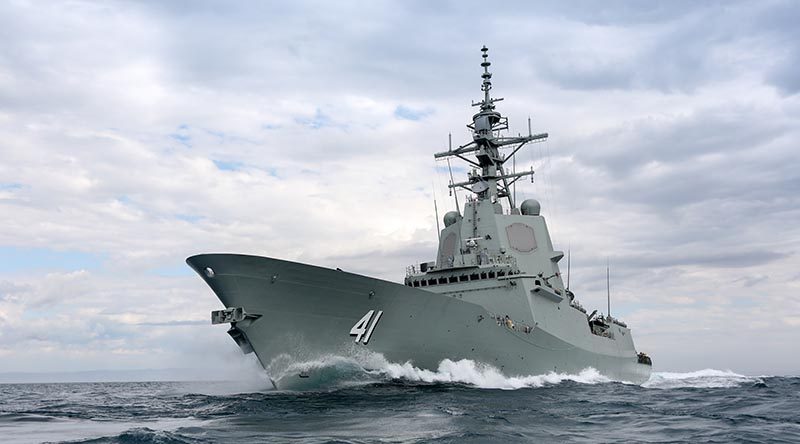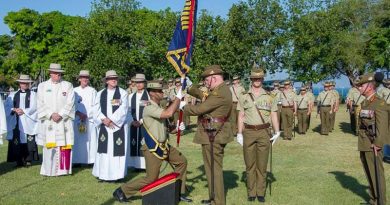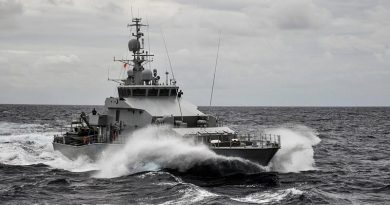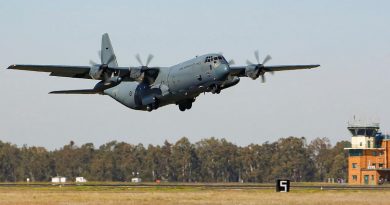Navy expands by 1000 in two years

The Royal Australian Navy’s ambitious growth and retention program has proven a success, with the Navy growing by more than 1,000 members in under two years.
FILE PHOTO: HMAS Brisbane. AWD Alliance photo.
This represents an eight percent increase since January 2018 and is a result of flexible workplace arrangements, financial incentives and industry placements.
Minister for Defence, Senator the Hon Linda Reynolds CSC said the retention program is attracting a diverse group of talent and experience, and is ensuring the Navy has highly trained and skilled individuals.
“The Navy has been an integral part of the nation it has served for over a century,” Minister Reynolds said.
Navy is currently rolling out 45 retention initiatives, including financial bonuses for key sailor and officer categories, flexible workplace arrangements for uniformed members as well as outplacement programs to improve professional development for technical sailors.
These measures are the result of a Navy-wide consultation program, which resulted in 600 suggestions from members of every rank.
Minister for Veterans and Defence Personnel Darren Chester said the unique nature of military service required distinct pay and conditions to recruit and retain the people needed for Australia’s current and future Defence capability.
“We rely heavily on the personal and professional sacrifices made by our service men and women and their families, and the Australian community expects that the ADF’s conditions meet the demands of service life,” Mr Chester said.
In the 2017-18 Financial year, Navy’s full-time workforce was 13,818 – down from 14,077 the previous year.
ADF strength 2017-18:
|
2016–17 Actual
|
2017–18 Budget estimate1
|
2017–18 Revised estimate2
|
2017–18 Actual
|
Variation
|
%
|
|
| Navy |
14,077
|
14,123
|
13,807
|
13,818
|
11
|
0.0
|
| Army |
30,314
|
30,672
|
30,568
|
30,410
|
–158
|
–0.5
|
| Air Force |
14,289
|
14,399
|
14,310
|
14,247
|
–63
|
–0.4
|
| Total average funded strength |
58,680
|
59,194
|
58,685
|
58,475
|
–210
|
–0.4
|
.
.
.
.
.
.

.
.






Re retention of RAN officers and Sailors has been an ongoing issue since I joined in 1970 and still ongoing when I resigned in early 1991. There have been promises of externally recognized standards of training but many have found out that that is mainly just lies as the RAN Certificates were not recognized by a lot of states. I understand that this is similar to ADF across the board.
The small number of system electrical sailors that had reasonable training were regularly walking awaydue to excessive amount of time on ships.
Burn out has also been a major factor with the high turnover in the last couple of decades.
The use of Contractors has also seen job satisfaction flushed away.
I was in the RAN Hydrographc Service and finished my service as a Chief Petty Officer Survey Recorder.
Thanks for your comment Mike.
This story expands on one of your key points (civilian accreditation) – https://www.contactairlandandsea.com/2019/10/28/sailors-successfully-sue-navy-over-dud-recruiting-promises/
I absolutely agree with your point on hiring contractors. Might be cheaper in the short term, but morale, career progression and the very limited ability to deploy them in war zones (at massive extra cost), will definitely bite Navy and Army (and RAAF to a lesser extent?) on the arse in the long run – in my humble opinion.